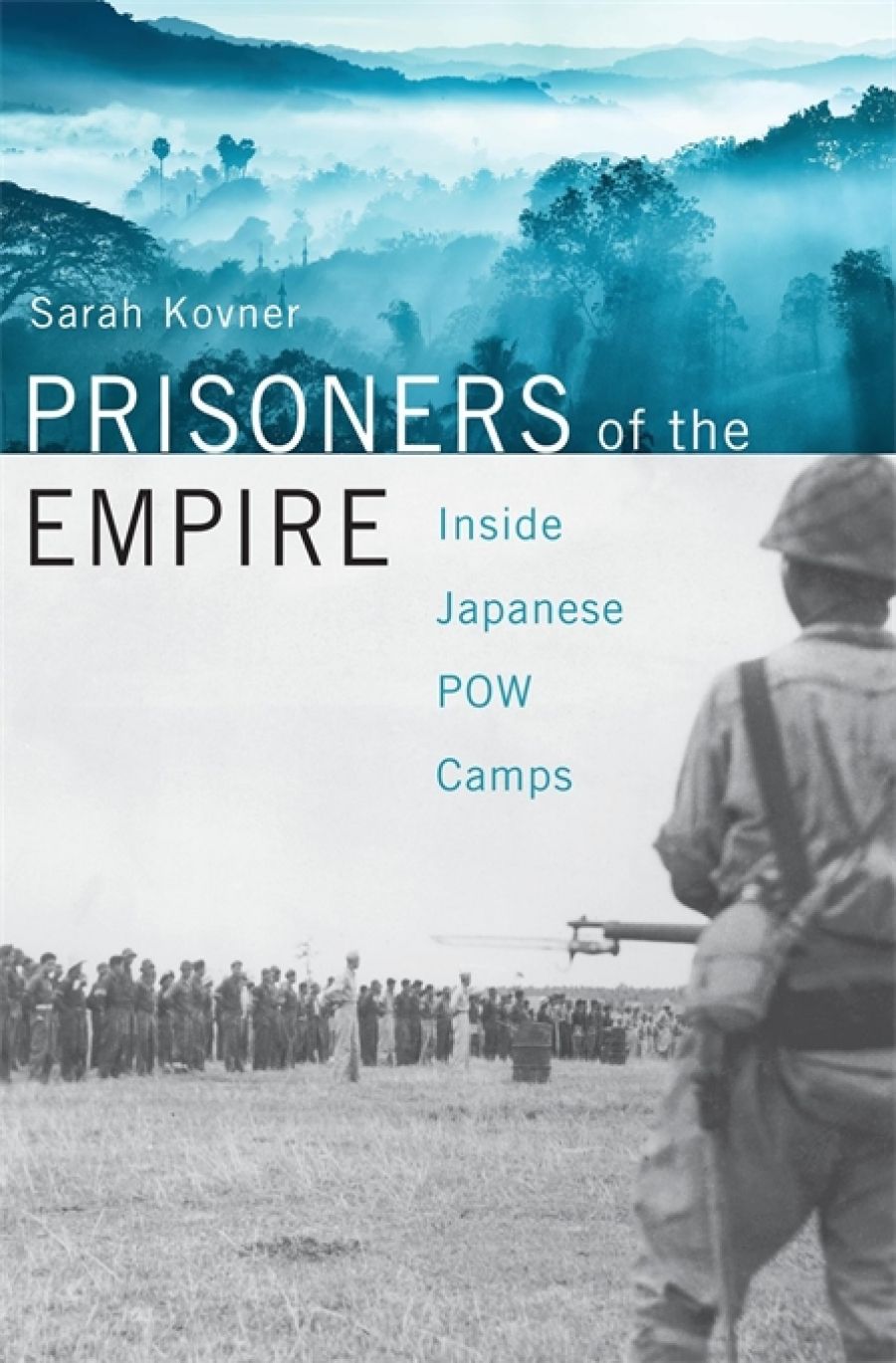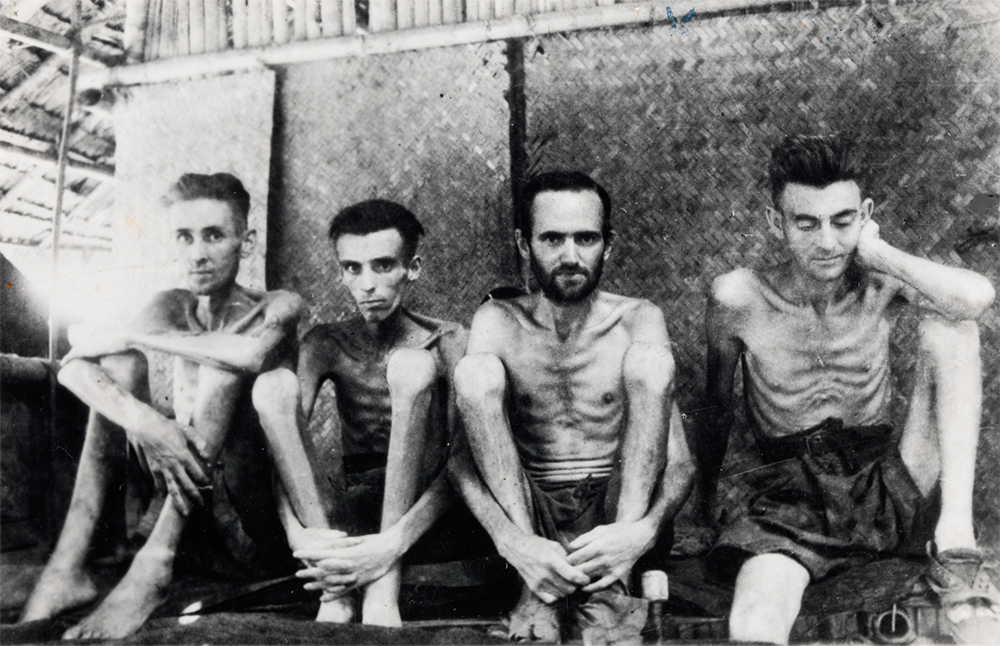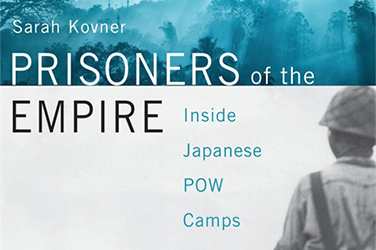
- Free Article: No
- Contents Category: History
- Review Article: Yes
- Article Title: War without mercy
- Article Subtitle: A woeful erosion of humanity
- Online Only: No
- Custom Highlight Text:
The suffering of prisoners of the Japanese dominates many Australians’ memories of World War II. More than 22,000 men and almost forty women were captured in Southeast Asia between 1942 and 1945. About 8,000 of them died. Traditionally this high death rate has been attributed to a mix of Japanese cruelty and their refusal to observe international humanitarian law. The military code of bushidō, it is argued, meant that Japanese soldiers had no respect for enemies who had surrendered.
- Article Hero Image (920px wide):

- Article Hero Image Caption: Australian and Dutch prisoners of war with beri beri at Tarsau in Thailand, 1943 (Australian War Memorial P00761.011)
- Alt Tag (Article Hero Image): Australian and Dutch prisoners of war with beri beri at Tarsau in Thailand, 1943 (Australian War Memorial P00761.011)
- Featured Image (400px * 250px):

- Alt Tag (Featured Image): Joan Beaumont reviews 'Prisoners of the Empire: Inside Japanese POW camps' by Sarah Kovner
- Book 1 Title: Prisoners of the Empire
- Book 1 Subtitle: Inside Japanese POW camps
- Book 1 Biblio: Harvard University Press, US$35 hb, 336 pp
- Book 1 Readings Link: booktopia.kh4ffx.net/XxZLv5
This new study by a young American scholar, Sarah Kovner, does not dismiss these arguments; nor does it deny that many Allied prisoners and Asian labourers died of excessive work, malnutrition, and poor medical care. However, rather than accepting ‘as a given’ that Japanese society had a code of conduct that required prisoners be treated cruelly, Kovner argues, first, that the neglect was a problem of logistics. The numbers captured in early 1941–42 far exceeded what the Japanese authorities anticipated. In such circumstances, POWs are always vulnerable. Some 32,000 German POWs in Allied hands died in three months of the European winter of 1944–45.
Second, since the Japanese were pushed to their logistical limits fighting the Chinese and the Allies, they did not attach any priority to the care of POWs, who were often held in remote locations. Third, the Japanese military failed to create a system of administration or a chain of command that was clear and able to enforce standards that might have protected POWs. Hence, conditions in camps varied dramatically across the Asia–Pacific region, depending on the local command. Whether individual prisoners lived or died was a matter of chance. But, contrary to what many Australians might have thought, there was no policy or mandate from Tokyo to mistreat or kill prisoners, even when the Japanese faced defeat in 1945.
In developing these arguments, Kovner focuses on the Philippines, Singapore, Japan, and Korea. This choice – the primary audience for the book is presumably American – allows her to examine a range of conditions: from the terrible privations of US troops during the Bataan Death March, to some almost model camps. Although prisoners were paraded through the streets of Korean cities, and their camps were often spartan, conditions compared favourably with many camps south of Hong Kong, where access was denied to the International Committee of the Red Cross (whose records Kovner has trawled and uses extensively).
Kovner’s case studies demonstrate not only the lack of consistency in Japanese behaviour, but also the degree to which the Allied prisoners were affected, negatively, by tit-for-tat reprisals. The Pacific war, as John Dower has memorably said, was a ‘war without mercy’ on both sides. Japanese internees within the United States and prisoners in Asia became bargaining chips in a cycle of reciprocal reprisals. Captured Allied airmen were often executed if they were shot down, because the Japanese believed that the aerial bombardment of Japanese cities was a war crime. They had good reason: perhaps 100,000 Japanese died in one attack on Tokyo in March 1945. The local Japanese population also suffered terribly as the US blockade became a stranglehold in the last year of the war. Why should Allied prisoners of war benefit from such food parcels as the Red Cross managed to deliver?
Comparatively few Australians were held in camps in Japan and Korea, so Australian readers might question the relevance of Kovner’s findings to Southeast Asia. Indeed, her command of detail is less sure in relation to this region. She claims, for example, that the Japanese did not recognise rank among their prisoners: but even on the Thai–Burma railway, Australian officers were rarely forced to do manual work, a privilege that could have meant the difference between life and death.
Nonetheless, Kovner’s main arguments – that the maltreatment of prisoners owed much to poor planning, lack of central policy and control, and logistical failures – remain persuasive. To be sure, Australian prisoners suffered from almost sadistic cruelty. On Ambon, the camp commandant, an interpreter named Maskiyo Ikeuchi, pointlessly overworked already starving Australian prisoners to the point where nearly eighty per cent of them died. But we should note that by 1945 Ambon was isolated, physically and psychologically, from Japan by a blockade that meant, as Kovner and Australian scholars such as Lachlan Grant have pointed out, that more than 2,000 Australian POWs died when the ‘hell ships’ taking them to Japan were torpedoed by the US Navy.
Logistics also explains – if it does not excuse – the high death rate suffered by Allied prisoners at the most remote camps on the Thai–Burma railway. As the 1943 monsoon set in, and prisoners moved beyond access to the Kwae Noi River, road transport collapsed. The resulting malnutrition contributed to the deaths of twenty-nine per cent of Australians in F Force. Of course, work on the railway should have ceased, at least until the rains eased. Here the well-being of their workforce was a lower priority for the Japanese military than completing this strategic line of communication as quickly as possible; similar priorities prevailed elsewhere.
Thus, the main thesis of this book holds true across Asia: simplistic notions of culturally determined cruelty do not fully explain the maltreatment of POWs, even though the conduct of the Pacific war was clearly infused with racism on both sides. The chaos of war, and the plea of ‘military necessity’ – alas, so often the trump card during warfare – played a major role in this woeful erosion of humanity.


Comments powered by CComment